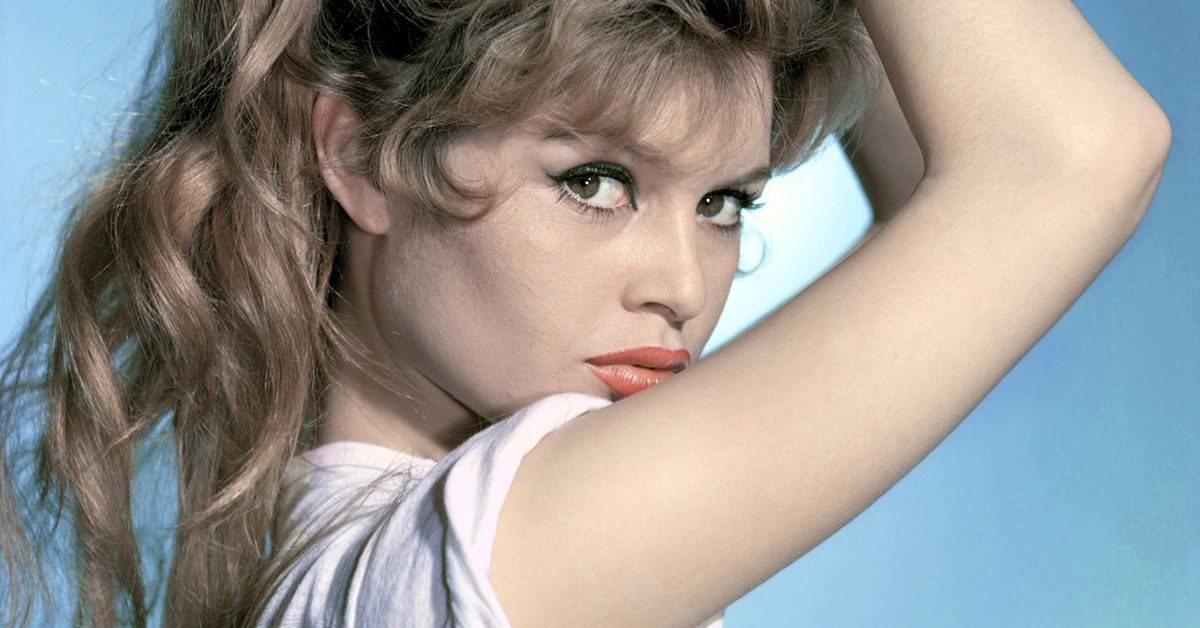Paris-born model, singer and actress Brigitte Bardot is known as much for her style icon as she was for any of the roles she played.
Now 89, she lives a vastly different life, having retired at the height of her fame and later becoming an animal rights activist.
Almost 70 years after she first shot to fame, many of her fashion and beauty styles still leave a mark on the world.
READ MORE: How Paris became the fashion capital of the world
Let’s take a look back at her life, and revisit how she came to embody some of the most well-known looks of our times.
Bardot was born in the French capital on September 28, 1934.
She and her sister younger sister Mijanou lived in a seven-bedroom apartment in a luxurious part of Paris with their engineer father and mother.
There, a young Bardot reportedly became resentful of her parents’ strict rules regarding behaviour, manners, clothing and friends.
READ MORE: Cathy Freeman had ‘reservations’ about her iconic speedsuit
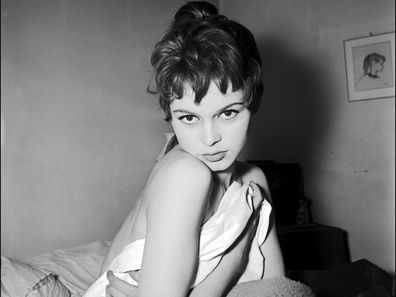
When she was seven, her mother enrolled her in ballet lessons two days a week, and at 14, she was accepted at the Conservatoire de Paris.
The same year, the then director of Elle and Le Jardin des Modes magazines hired Bardot as a junior fashion model.
At 15, she appeared on the cover of Elle for the first time. It resulted in an offer of acting work.
At the audition, she met Roger Vadim, and the two fell in love.

Her parents opposed the relationship, with her father buying a train ticket and enrolling her in school in England.
Vadim and Bardot agreed to accept their relationship under the condition they did not marry until she was 18. The two married on December 20, 1952.
Earlier that year, Bardot had appeared on the cover of Elle again, which led to her first acting role.
In 1953, she won a small role in a Hollywood film being shot in Paris, starring Kirk Douglas.
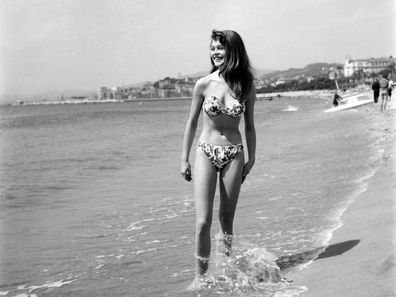
Her arrival at the Cannes Film Festival that year brought much media attention.
In 1956, she was cast in And God Created Woman, which Vadim directed.
The film, about an immoral teenager living in a respectable small-town setting, was a worldwide hit and made Bardot a star.
It also cemented her place as a sex symbol of such status, those words alone were not enough to describe her and the term “sex kitten” was coined for her.
Bardot and Vadim’s marriage did not last and she went on to have a string of relationships and affairs, as well as three more marriages.
During the height of her fame in the 1950s and 60s, Bardot became a style icon and was considered a muse for French fashion houses including Dior, Balmain, and Pierre Cardin.
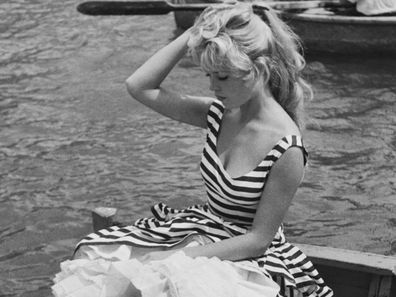
The Guardian once named Bardot “one of the most iconic faces, models, and actors of the 1950s and 1960s”.
Bardot’s fashion influence was huge. Her penchant for wearing off-the-shoulder tops that exposed the shoulders inspired a sweater named after her.
She popularised the bikini after she wore one in an early film and on the beaches of southern France during the Cannes Film Festival.
She also inspired a new type of footwear after shoemaker Repetto created a pair of ballerina or ballet flats for her in 1956. The shoes are still popular today.
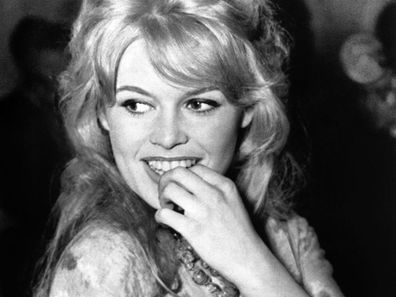
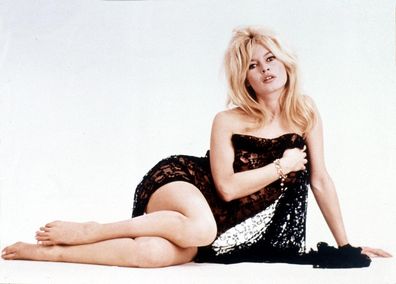
Parisian-inspired looks, including black and white stripes, were also made popular by Bardot, who was often pictured in various versions of this look.
Gingham-patterned clothing was another fashion item Bardot popularised after she wore a chequered pink dress for her 1959 wedding to second husband, Jacques Charrier.
Their union produced Bardot’s only child, son Nicolas-Jacques Charrier, before they divorced in 1962.
Another of her most iconic fashion statements regarded her hair, and she had a number of distinctive hair styles.
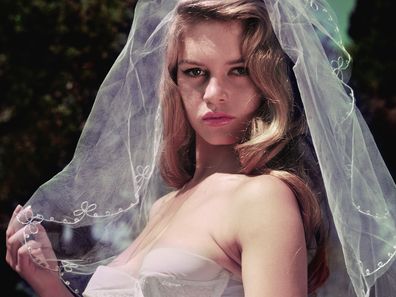
These included a full, teased-out style, her version of a beehive, and the half-up, half-down style, which became synonymous with Bardot.
Isabella Biedenharn of Elle once wrote that Bardot inspired thousands if not millions of women to tease their hair.
Bardot herself continued to wear her distinctive beehive style well into her senior years.
The use of a wide headband and various hat styles were among her other additions to fashion.

When it comes to beauty, Bardot’s impact is obvious.
Winged eyeliner, now back in fashion thanks to singing stars including Adele and Taylor Swift, was popularised by Bardot.
Even her famously full lips are thought to have inspired the overlined pout look that continues today.
Then there is her role in pop culture.
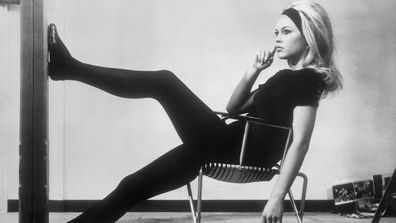
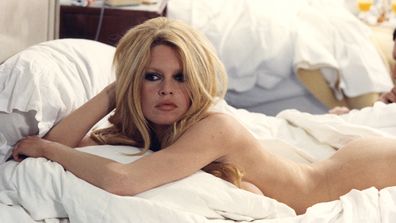
A photo of Bardot, naked except for a pair of black pantyhose, with her crossed arms covering her breasts, became known as the “Bardot Pose” and has been emulated numerous times.
Other famous Bardot poses include an image of her sitting naked, back-to-front on a director’s chair, while yet another shows her again seated, with one leg outstretched on a wall in front of her.
Celebrities have spoken about the impact of Bardot on the world, including former Beatles John Lennon and Paul McCartney.
Musician Bob Dylan dedicated the first song he ever wrote to Bardot, while Australian pop group Bardot, featuring her lookalike Sophie Monk, was named after her.
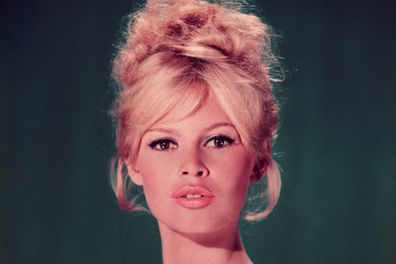
Numerous celebrities have tried to emulate Bardot’s most iconic looks, from model Claudia Schiffer to Aussies Kylie Minogue and Nicole Kidman, who credited Bardot for her 2013 campaign with British shoe brand Jimmy Choo.
Her beauty is legendary and enduring.
The 2011 Los Angeles Times Magazine‘s list of the “50 Most Beautiful Women in Film” ranked her number two, while a 2015 survey in Britain saw her ranked in the Top Ten Most Beautiful Women of All Time.
Bardot was also responsible for putting the French Riviera town of Saint-Tropez on the map after she filmed And God Created Women there.
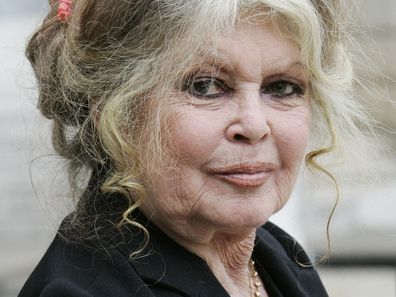
She went on to buy a home there, which became her main base.
Bardot retired from acting in 1973. After living as a recluse for more than a decade, she decided to use her fame to support her animal rights activism, and created the Brigitte Bardot Foundation.
She married fourth husband, Bernard d’Ormale, in 1992, and the couple has continued to live in their Saint-Tropez home.
